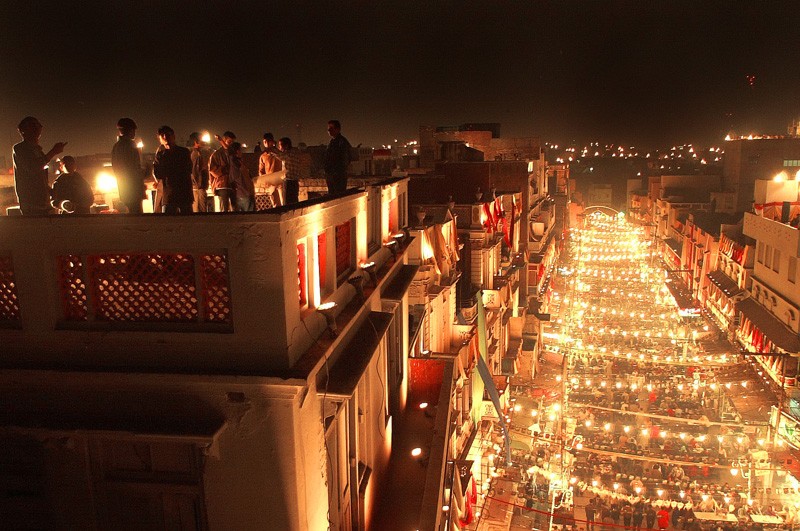
The ban on Basant has created a void in the lives of the Lahoris

As the harshness of winter starts to give way to the warm embrace of spring, the flowers are ready to bloom and the birds chirping in anticipation of joy. But there is something amiss. A random Lahori can’t stop reminiscing the days that are no more -- the days when everyone, young and old, rich and poor, would flock to their rooftops, when bandages on your hands were a proud evidence of your dedication and mastery, and the midday sky would assume a kaleidoscope of colours. Those were also the days when the people from different parts of the world would descend on the city and join in the merriment. Oh, those were the Basant days!
Yousuf Salahuddin, a renowned patron of arts and culture, puts it in the following words: "For a Lahori, there’s no jashan-e-baharan (celebration of spring) without Basant. Period."
Historically, as a festival or a sport, Basant was celebrated with the most fervour within the confines of the Walled City whose very architecture, with its narrow lanes and home lofts acted as a natural control zone, limiting the number of runaway kites. Over the passage of time, however, as the festival expanded to other parts of the city and as the manufacturers started to add copious amounts of glass to the dor (kite string), this organic control zone ceased to exist, resulting in mass casualties. These casualties, coupled with religious zealotry that conflated Basant with Hinduism, put immense pressure on the government which decided to ban kite-flying as an activity altogether.
This was an extremely narrow minded and absolutist of the government which had clearly failed to see the bigger picture and kept negating the significance of the whole festival.
"Basant was no ordinary festival," claims Khalid Malik, President, KiteFlying Lovers’ Association. "It’s a part and parcel of being a Lahoriya."
According to Malik, the government does not seem to share this sentiment. As unrealistic as the ban is, it has left a deep void in the lives of the Lahoris.
Culturally, it used to be the most significant of all annual festivals of the city, and it served to project the ‘soft image’ of the country abroad.
Basant was also a windfall for local business and would "bring in revenue in excess of Rs2.5 billion," to quote Salahuddin.
In order to fill the void, Salahuddin says, the urban-based people have turned to several ‘foreign’ festivities such as Valentine’s Day and Halloween. Although globalisation has played its part in the adoption of foreign cultures and any form of celebration may not be discouraged, it is sad that that these festivities should take precedence over our own cultural sport which has been put on the sidelines.
It was understandable that the government wanted to prevent the sad and unfortunate deaths of unsuspecting motorcyclists and pedestrians who accidentally cut their throats as the dor struck them on the road. But outright banning of the event is preposterous. Could an alternative solution not have been adopted?
Surely, if the administration has the manpower and capability to sift through the entire population and apprehend any one caught flying kite, it can also police the source of the problem and regulate the making of the dor to remove the glass content in it and make it safe.
Or, alternatively, as Yousuf Salahuddin says, "The government could’ve just banned the charkha (lever) which is required to hold the glass dor so that the makers and flyers of kites are forced to resort to the use of pinain that does not facilitate the use of such dor."
The blanket ban on Basant, which was the poor man’s sport and the rich man’s festival, and the subsequent feeble arguments provided by the government in its defence are reflective of the latter’s stance on the matter. For those in corridors of power, it is a shut case. For them, it is not worthy of discussion even. But how would the government explain the celebration of Basant in neighbouring India, or, for that matter, UAE, London and different parts of the USA?